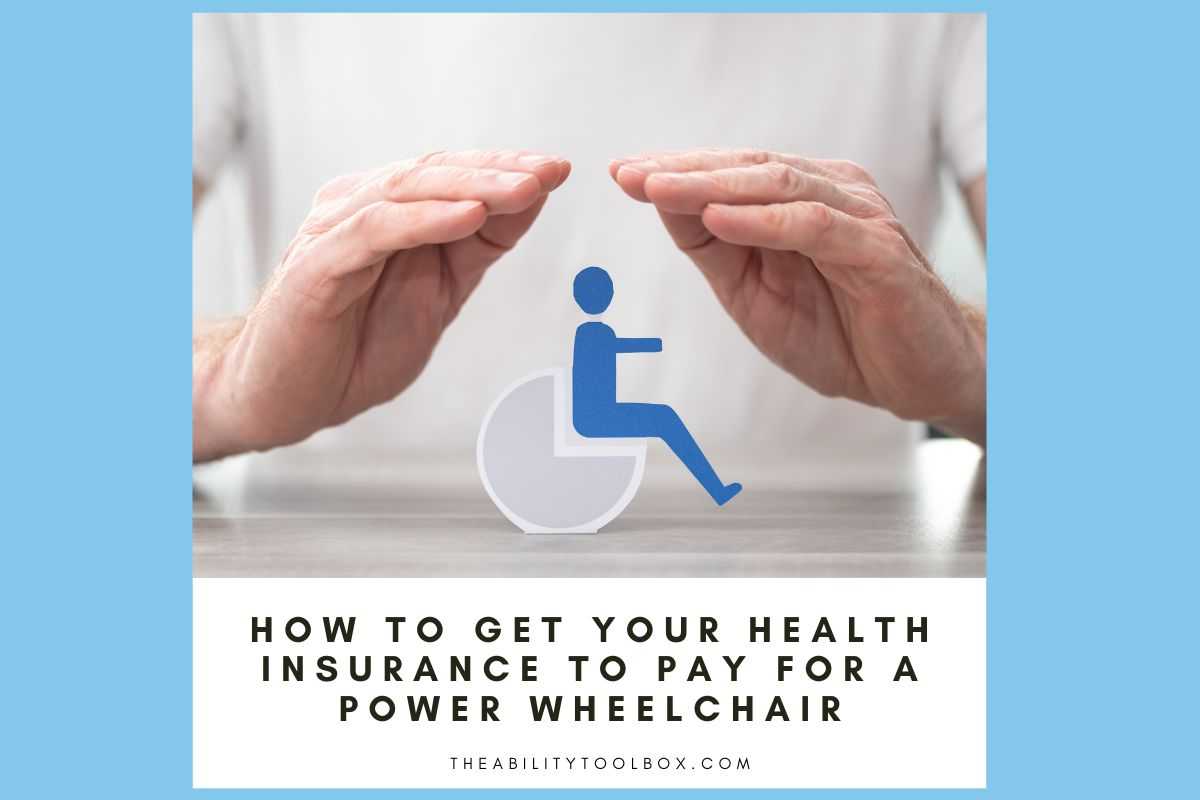
These tips can help you get your health insurance to pay for a power wheelchair so you can enjoy greater mobility and independence. In this guide, written by a lifelong power wheelchair user with lots of input from other peer expert wheelchair users, we’ll cover the basics you need to know as well as some tips others won’t tell you about how to get the wheelchair you need and want without lousy insurance holding you back.
Before You Get Started
The world of power wheelchairs is full of medical terminology, insurance jargon, and a seemingly endless number of acronyms. If you want to get insurance to pay for a power wheelchair, you should start by learning how they're categorized into groups and decide which type of electric wheelchair is right for you. Please read those articles and then return to this guide — everything will make a lot more sense!
Understanding (and Working Around) Health Insurance Rules About Power Wheelchairs
In the United States, our broken healthcare system tries to avoid paying for anything and everything. (See, I told you this would be an honest guide that goes where others won’t when talking about this issue!) Both public and private healthcare systems have rules that are arbitrary and unjust. Soulless companies and Washington bureaucrats don't understand the complexities and nuances of disabilities. Many people who need mobility aids fall through the cracks — but you don't have to be one of them.
It won't be easy, but it is possible to get what you need if you learn how the system is set up and then work through and around its limitations. You'll need strong self-advocacy skills and a willingness to do whatever it takes. (Or money, but if you're rich enough to buy a new Permobil out of pocket, you're probably not reading this guide.) Remember, you deserve to live as full a life as an able-bodied person, and your power wheelchair should be outstanding, not adequate.
Durable Medical Equipment Coverage
In healthcare parlance, wheelchairs and scooters, along with other devices such as canes and walkers, are known as durable medical equipment (DME).
The Affordable Care Act mandates that private insurance cover a lot of things, but shockingly, it doesn’t require coverage for most durable medical equipment. That means there are a few plans that won’t pay for wheelchairs at all. The majority of private plans do offer DME coverage, but some have exclusions for certain devices or features. If you're a wheelchair user and shopping for plans on the ACA Marketplace, make sure you check their DME coverage.
Many private insurance plans that cover DME follow Medicare rules for DME. Since many wheelchair users have Medicare and/or Medicaid, our guide focuses on them, but if you have private insurance, it should still be useful.
Coded vs. Non-Coded Wheelchairs
Wheelchairs are considered Class I or Class II medical devices, and therefore they must be cleared by the FDA before they can be sold. But there's another step required for them to be covered by Medicare and other forms of insurance: getting the device coded in the Durable Medical Equipment Coding System (DMECS). Manufacturers build the expense and time involved in this process into the price of their devices, which contributes to the high cost of power wheelchairs.
In the past decade or so, many manufacturers have chosen not to enter some or all of their devices into the DMECS. Without the extra costs and complications of dealing with insurance, they can sell these non-coded wheelchairs and scooters for lower prices to people who pay out-of-pocket. That's why you now see so many simple, portable power wheelchairs and scooters for under $3000, and even under $1000 — but they aren't covered by insurance.
At first glance, making so many devices for private pay only might seem discriminatory against low-income people, and that's true to an extent — but not as much as you might think. Many private insurance plans only cover 80% of DME, so you're looking at $1000 or more out-of-pocket for a basic coded power device. Add the costs and time spent driving to multiple medical appointments, missing work and family events due to appointments and/or limited mobility, etc., and buying a basic or portable wheelchair yourself makes a lot of sense and cents. Plus, you can use your HSA if you have one and/or deduct the cost from your taxes as a medical expense.
For more on this topic, check out our article: Should I Buy a Wheelchair Out-of-Pocket or Use Insurance?
Medicare's In-the-Home Rule
Medicare will cover a wheelchair (or any mobility device) if you need to use it in your home to perform one or more mobility-related activities of daily living (MRADLs). MRADLs include moving around your home, cooking, dressing, using the restroom, etc. This is known as the “in-the-home rule,” and many private insurance companies follow it as well.
The Medicare in-the-home rule is fundamentally unjust because it disregards disabled people's need for mobility outside our homes. It needs to be changed, but in the meantime, there is a way around it.
In our experience, some partially ambulatory people are denied power wheelchair coverage because they tell their doctor and physical therapist that they just need a wheelchair for outdoors or long distances. If you want insurance to pay, you must say you need to use a wheelchair in your home and describe how you'll use it at home. Of course, once you get your chair, you can choose when and where you use it.
Medicare requires that your DME provider visit your home to ensure that the wheelchair being prescribed can be used inside. If your home has steps and no ramp, Medicare won't pay for a power wheelchair. Medicare will sometimes reimburse for the cost of a wheelchair ramp that has been prescribed by a doctor, but Medicaid is more helpful for home modifications. You should buy a wheelchair ramp or at least start the process of obtaining one before trying to get a power wheelchair through Medicare.
Learn More: How to Build or Buy a Wheelchair Ramp
Getting Insurance Coverage for a Power Wheelchair vs. a Manual Wheelchair
You can think of durable medical equipment coverage as a ladder, or better yet, a ramp. To move up the ramp to more complex technology, you must show a medical reason why simpler mobility aids won’t work. So to get a power wheelchair, your doctor and physical or occupational therapist must explain why you can’t use a manual wheelchair in your home.
Justifying the need for a basic motorized wheelchair isn’t typically too difficult. Be sure to explain to your doctor and other healthcare providers why you can’t use a manual wheelchair. Common reasons include partial or full paralysis, limited range of motion, arthritis, chronic pain, chronic fatigue, or a history of shoulder dislocations, muscle, or tendon injuries.
If you can use a manual chair but are struggling with long distances, a power assist system could be right for you. Such systems offer the best of both worlds to people with some upper body strength and the ability to do wheelies. Medicare will cover power assist devices if your healthcare team can justify your need for one in your home — see above.
Aside from power assist, your insurance will typically only pay for one type of mobility device at a time. For example, you can’t have them buy you a power wheelchair and then also a manual wheelchair within the same 5-year period. This is frustrating for people who need to have both types of devices for various situations.
If you transition to a power chair, we recommend keeping your old manual wheelchair in case the power chair breaks down or you need to go someplace in a regular car. If you plan on using both devices often, you can also check out used wheelchairs and local donation programs so you don’t have to spend as much out-of-pocket.
Health Insurance and Power Wheelchair Seating Functions
Some motorized wheelchairs are just a captain’s chair on wheels, while others can support powered seat positioning functions such as tilt, recline, seat elevation, and standing. Group 2 power wheelchairs can support a single power positioning function, while Group 3 can support two or more. If you review the power wheelchair groups, you'll quickly see the stark difference in overall capabilities between Group 2 and Group 3 chairs. And from one wheelchair user to another, trust me: if a portable power chair doesn't meet your needs, you want a Group 3 chair. So how do you get one?
For starters, to get a Group 3 power wheelchair with seat positioning functions covered by Medicare, you must have a neurological condition, a myopathy, or a congenital skeletal deformity. You can also qualify if you have another condition that makes you unable to change positions independently, such as multiple limb amputations, and use your wheelchair all day.
As with every other aspect of electric wheelchair funding, your medical team must justify your need for each seating function. The good news is that if you need two or more, you can get a Group 3 chair.
Learn More: Power Wheelchair Groups
Tilt and Recline
Electric wheelchairs can be equipped with a tilt feature (rotate back) and recline feature (lie down). Most modern power chairs that have one of these functions will also have the other. You must meet one or more of these medical justifications for tilt and recline:
- Preventing and treating pressure sores if you can't adequately shift your position without help.
- Managing tone or spasticity (muscle spasms or stiffness).
- Performing intermittent catheterization if you can't transfer to bed.
Seat Elevation
A seat elevator raises you up so you can transfer and reach high cabinets and shelves. After years of advocacy from the disability community, Medicare began covering seat elevation for power wheelchairs in 2023. They also made the medical criteria very flexible, which means that you can probably get access to this life-changing feature.
You can get a seat elevator if you:
- Perform weight-bearing or non-weight-bearing transfers to/from an electric wheelchair to a different-height surface while in your home, independently or with assistance from a caregiver or lifting device.
- Need to reach items from your power wheelchair to complete one or more MRADLs such as toileting, feeding, dressing, grooming, and bathing, with or without a caregiver and/or assistive equipment.
Standing
A standing function can lift you into a partial or fully upright position to allow weight bearing, prevent bone density loss, improve digestion, and more. But despite the clear medical benefits, Medicare and most private insurance companies still don't cover standing. Disability advocates are working on it and hopefully, things will change soon. In the meantime, you can utilize alternative funding sources to cover this function on your chair.
The Insurance Authorization Process
To get insurance to pay for a power wheelchair, you'll have to follow a specific process that will be fairly complex, especially if you need power seating functions. Various medical professionals must document your need for the device and jump through a lot of hoops. You'll also need a good Durable Medical Equipment provider. These are the professionals you'll be working with, the tasks they'll need to complete, and some tips to ensure things go as smoothly as possible.
The Durable Medical Equipment Provider
You can think of a DME provider as a car dealer for wheelchairs. The DME business helps you choose the exact model, specifications, and accessories of your wheelchair. They order the wheelchair from the manufacturer and ensure that it is properly adjusted to fit you. They also handle maintenance and repairs.
DME companies very tremendously in quality and speed of service. We highly recommend finding a good DME provider before you start the process of getting a wheelchair.
The Face-to-Face Visit with Your Doctor
The first step in getting insurance to pay for a power wheelchair is to see your doctor for a face-to-face visit. The visit must be specifically about getting a power wheelchair; it can’t be a regular check-up. Your doctor must prescribe a power wheelchair and explain why you need it.
Most doctors don't know all the ins and outs and features of mobility devices, so we recommend going in knowing what you want and providing specific information about the features you need and why. If you need tilt, recline, and or seat elevation, your doctor should prescribe a complex rehabilitation technology power wheelchair. Your doctor doesn’t need to specify each measurement or accessory; that’s the job of the other professionals in this equation.
The Physical/Occupational Therapy Evaluation
After you’ve met with your doctor, you’ll need to visit a physical therapist or occupational therapist who specializes in wheelchair evaluations. Most of these therapists are Certified Assistive Technology Professionals, meaning they have special training in understanding wheelchair functions and how they can improve mobility and health. If you don’t know of such a professional, you can check with your DME provider or call local physical therapy clinics, and then ask your doctor to refer you there.
The ATP evaluation is one of the most important parts of the process, especially if you’ve never used a power wheelchair before. During the evaluation, the therapist will check your range of motion and discuss the type of controls and power functions you need. Be honest about your symptoms such as pain and spasticity as these can often be relieved with the right seating and positioning. Discuss your risk of pressure sores and how they can be prevented.
This is the time for you to talk about your needs, goals, and lifestyle with someone who cares about your well-being and independence. The vast majority of occupational and physical therapists are kind and supportive people who will advocate for you to get the best equipment for your needs.
Wheelchair Selection and Measurement
After your evaluation, your PT or OT should send their report to your DME provider. Then you can work with the provider (and the therapist again, if necessary) to choose a specific model of wheelchair and features.
If you’ve never used a power wheelchair before, we highly suggest testing a few different brands and models. Any good DME provider should have demo wheelchairs available on request. Try the controls to make sure you can operate them and decide if you need additional modifications such as a different attachment on your joystick or switches rather than buttons. Test the wheelchair in tight spaces, over rough sidewalks, and in grass to make sure it performs acceptably for your needs. You can also ask to try different types of seating such as an air or gel cushion, side supports, thigh supports, etc.
You can see our brand recommendations in our article about types of power wheelchairs.
Insurance Approval Timeline for a Power Wheelchair
It can take several months, even a year, to get insurance to pay for an electric wheelchair. The more complex features you need, the longer it will take.
Sometimes it can be difficult to determine whether your insurance company is causing the delay or the problem is with your doctor or DME company.
Dealing with Roadblocks from Health Insurance or Medical Professionals
Getting health insurance to approve a power wheelchair is a challenge. Here are some all-too-common situations you might encounter and how to deal with them.
What if my doctor says I don't need a power wheelchair?
We all want to believe that our doctors know what is best for us, and sometimes, they do. However, doctors are human beings who live in the same society and absorb the same biases as the rest of us. Doctors can be ableist too.
If your doctor refuses to prescribe a power wheelchair but you strongly believe you need one, here are some things you can do.
- Keep a journal or log of all the activities you’ve been unable to do because of your lack of mobility. Focus on tasks that are important for living, such as dressing, cooking, and grocery shopping, rather than recreational activities. This should help convince your doctor that you need a wheelchair to function.
- Describe your symptoms based on your worst day. Don’t minimize or try to mask your disability.
- Change doctors. If your doctor isn’t supportive, find a better one. That’s not always easy, of course, but if your doctor doesn’t respect your need for a power wheelchair, they probably won’t provide good care for you in other ways.
What if I'm being steered away from the type of wheelchair I want?
If you have been doing lots of online research and you believe you found the perfect electric wheelchair, but your physical therapist or the DME provider thinks it won’t be right for you here are some factors to consider.
- Don’t assume the worst. Most providers want what’s best for their patients. They may have good reasons for their opinion, so to start, ask them why. They should be able to explain their concerns so you can work together to find a solution. Perhaps there’s an accessory or feature that could be added to make the device you want work for you. Perhaps there’s a similar device you’ll love that will be safer and easier for you to operate.
- Look at the situation objectively. It can be difficult to separate legitimate concerns from ableism, but try to see their point of view and assess their motivations. Are they suggesting a different device because it will help you to be more independent, or are they being dismissive of your capabilities? Are they trying to get what you really need, or are they pushing a low-level device because they know your insurance will put up a fight and they don’t want to deal with it?
My medical team says I need a certain mobility device but won't be able to get it because of insurance. What should I do?
Good therapists and DME providers know that the system is broken. They understand what they have to write and say and do to get patients the right wheelchairs to meet their mobility needs. You can outright ask them if they’re willing to advocate for you with insurance despite their concerns about the item being denied coverage, and help you find other funding sources if all else fails. They should be eager to help. If not, stop the process and find someone who is willing to go to bat for you. You’re better off dealing with a possible delay than getting a piece of equipment that won’t work for you and being stuck with it for five years or more.
Alternate Funding Sources for Power Wheelchairs
If your insurance absolutely won’t pay for a power wheelchair, or won’t pay for seating functions you need such as standing, all is not lost. There are other programs and organizations that will help. Here are a few you can look into:
Vocational Rehabilitation
If you work or want to start working, Vocational Rehabilitation (VR) is one of the best programs for people with disabilities. Each state and county has its own Department of Rehabilitation. When you register for services, you’ll be assigned to a VR counselor who will help you set employment goals and develop a plan to get and keep a job. VR will pay for services and support you need to become and stay employed, which includes any wheelchair add-ons that can help you work or stay healthy and that insurance refuses to cover. They also cover wheelchair-accessible vehicle adaptions, assistive technology such as a computer with voice recognition software, and accessible home remodeling.
Medicaid Waivers
People with disabilities who receive Medicaid can often qualify for a waiver that will pay for assistive technology. Power wheelchair functions such as standing can be covered under a waiver.
Charities
If you’ve tried everything and insurance won’t pay for part or all of your power wheelchair, you may be able to get assistance from local charities or churches. Contact your closest independent living center to see if they can refer you to any organization that can help.
The Permobil Foundation can assist with paying for portions of their chairs that are not covered by insurance. If you’re getting a different brand of chair, ask your DME provider if that company has a foundation or works with one that can assist you.
Private Pay and Fundraising
You can pay for additional power wheelchair features yourself or get help from family and friends. Many people start a GoFundMe to cover standing functions, upgraded motors, and other features that insurance companies tend to deny. We recommend starting fundraising as soon as you decide to get a wheelchair. If insurance approves the features, you can set aside the money for a repair fund or other needs.
Health Insurance and Power Wheelchair Repairs
Most power wheelchairs have a warranty that will cover parts and repairs for the first couple of years. Beyond that, if you obtained your wheelchair via insurance, it should also pay for repairs to that wheelchair. You will need to get a doctor's prescription for wheelchair repairs and it may have to go through an approval process. Unfortunately, this can take a long time. If your chair has a minor issue and you can still use it, the delay probably won’t be a big deal. However, if the chair is unusable, you could end up being trapped at home for weeks or even months.
For more on this topic, check out our article: How to Repair a Power Wheelchair
Have you struggled to get health insurance to approve an electric wheelchair? Do you have tips for our community?
Share your experiences in the comments.
Founder and Editor-in-Chief of The Ability Toolbox. I received my BA in English from Stanford University and MA in Clinical Psychology from Antioch University Los Angeles, and have worked in entertainment and health media for over 20 years. I also blog about traveling with a disability. As a wheelchair user with cerebral palsy, I am deeply committed to amplifying the voices of the disability community through writing and advocacy.



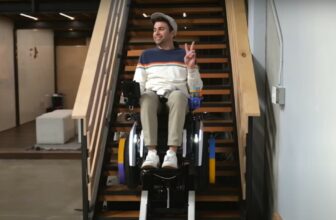
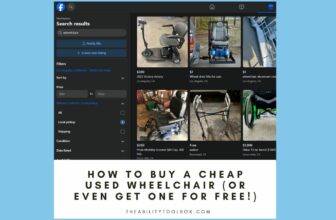
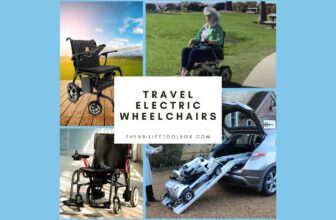
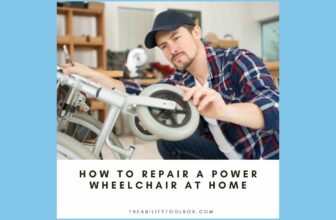


Start the discussion at community.theabilitytoolbox.com